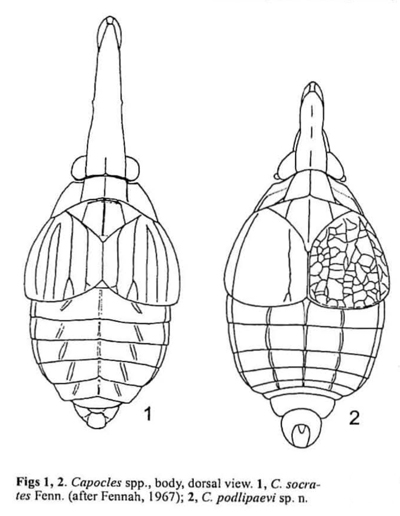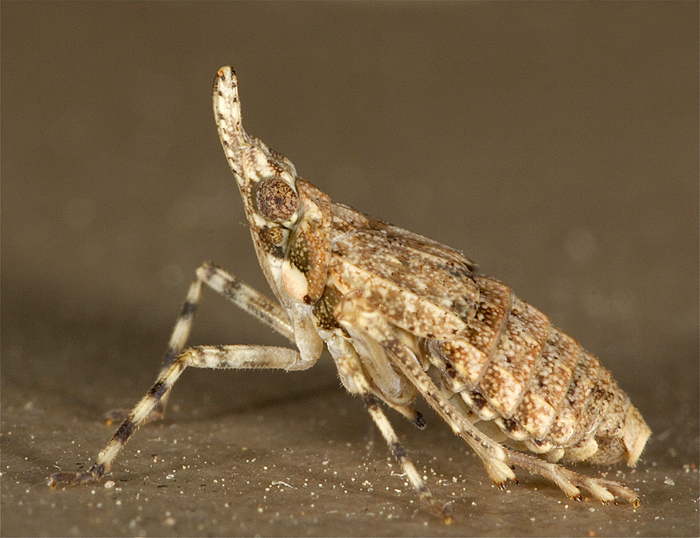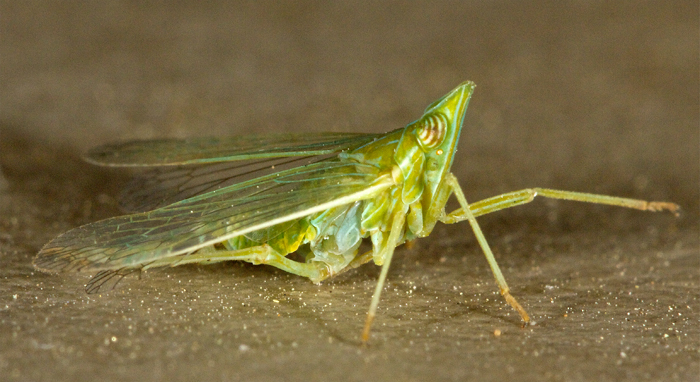Planthopper; Primitive Snout Bug
Family: Cixiidae
Planthoppers or Fulgoroidea are an exceedingly diverse yet excessively puzzling section of the order Hemiptera. Their superficial resemblance to leafhoppers and spittlebugs has misled taxonomic and phylogenetic studies for nearly two hundred years.

Kruger Natl Park
by ExF
Family Cixiidae
Worldwide Cixiidae consists of approximately 192 genera and 2,523 species (Holzinger et al. 2002, Bartlett et al. 2018, Bourgoin 2019), making them the largest family of planthoppers. Emeljanov (2002) and Holzinger et al. (2002) provide an overview of the current classification of Cixiidae, which now includes 3 subfamilies (Borystheninae, Bothriocerinae and Cixiinae) and 16 tribes. The higher taxonomy of Cixiidae has been examined by Emeljanov (1989, 2002), Holzinger et al. (2002), Ceotto et al. 2008, Ceotto & Bourgoin (2008), but has not yet been firmly established and our knowledge remains inadequate.
Identification
Cixiidae is defined primarily by plesiomorphic features (i.e., they lack the derived features found in other planthopper families). They are the earliest derived extant family of planthoppers, originating at least 130 mya, and possibly up to 200 mya.
Cixiid species are typically comparatively small (body size less than a centimeter) and usually inconspicuous. The face is longer than wide and the head is narrower than the pronotum. Cixiids and kinnarids (and some meenoplids) are the only planthopper families that have a median ocellus, which is located just above the frontoclypeal suture. The forewings are at least partly transparent and the veins bear minute setae. The hind tibiae end in a cluster of spines and may sometimes have spines along their length.
Enigmatic Morphological Features
Females occasionally bear impressive "wax tails" produced by wax-producing plates at the tip of their abdomen. The aims of these wax products in cixiids and other Fulgoromorpha are not sufficiently clarified yet, as experimental studies are lacking completely. They may protect against wetting and desiccation, especially in nymphs. SULC (1928) describes, that nymphs of
Reptalus panzeri covered the walls of their burrows with wax by “wagging" with the abdomen. In adults, the wax filaments are supposed to protect against getting smudged with own honeydew, and might cover eggs and protect them against desiccation. Also protection against enemies is assumed.
The sensory organ equipment of cixiids (and other Fulgoromorpha taxa) is impressive, but the morphology and function of these structures are still unclear in many cases. Perhaps the comparatively best investigated, but still insufficiently known, sensory organs are those of the antennae.
Beyond the antennae, sensory organs can be found on different parts of the body : Sensory pits with horizontal hairs are the most numerous, present on tergal parts in nymphs in most families, and showing a wide range of morphological variation. The function of these sensory pits is unclear; SuLC (1928) considers them to obtain information about atmospheric humidity.
Studying nymphs of
Cixius nervosus, SuLC (1928) also found several very long, thin hairs on the lateral parts of the sternites V and VI. He called them “anemestheterias" and assumed a sensory function concerning air movements.
Diet
Adult cixiids live on a wide variety of plants, feeding on phloem. The host plant range of most species is unknown, as no more information than a diagnostic description is present in the literature. Although the percentage of polyphagous species in cixiids is higher than in many other Auchenorrhyncha families, most taxa seem to be closely restricted to species specific, distinct habitat types. A couple of species are cavernicolous, feeding on roots in volcanic caves.
Biology
Females use their ovipositors to deposit their eggs into the soil. The eggs are covered and thus protected by wax filaments. In some species, females obviously creep along clefts deep into the soil, as they are sometimes recorded from traps several decimeters beyond the soil surface. Cixiid nymphs live subterraneously, feeding on roots of their - often herbaceous - hostplants and/or as fungivorous on rotten wood. Very little data about their ecology is available. The life cycle (of those species, where we know something about it) usually lasts one year, with hibernation - if necessary - in nymphal instar. Cixiid nymphs, as many other Hemiptera taxa, sometimes are associated with ants.
Adult cixiids are both diurnal and nocturnal, but with a distinct priority to daytime activity. As other Fulgoromorpha, they communicate by substrate-borne vibrations. Compared to other families, the acoustic repertoire of cixiids seems to be rather simple, territorial signals and rivalry calls are obviously missing.
Economic Importance
Some Cixiid species are pests of economically important plants. The highest number of economically important Cixiid species can be found on palms, where they act as phytoplasma vectors, causing diseases of the Lethal Yellowing type, in tropical and subtropical regions. Infested trees first drop mature and immature coconuts, then the flower stalks blacken, the fronds turn yellow, beginning by the lower, older ones and progressing up through the crown, until the tree is dead and only a telephone pole like stem remains. Unless treated, the tree dies within three to six months after the appearance of the first symptoms. Up to now, there is no cure for LY. Effective control is only possible by regular antibiotic injections (osytetracycline) to the trunk, but the most efficient way to deal with LY is by replanting with resistant coconut palms.
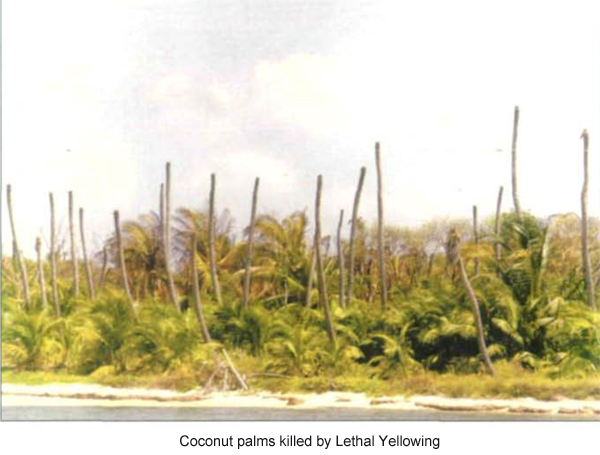
In tropical Africa, extensive damage is reported from coconut plantations both in the east and west.
https://www.hemiptera-databases.org/flowpdf/2359.pdf
https://www.zobodat.at/pdf/DENISIA_0004_0113-0138.pdf
https://sites.udel.edu/planthoppers/nor ... -cixiidae/
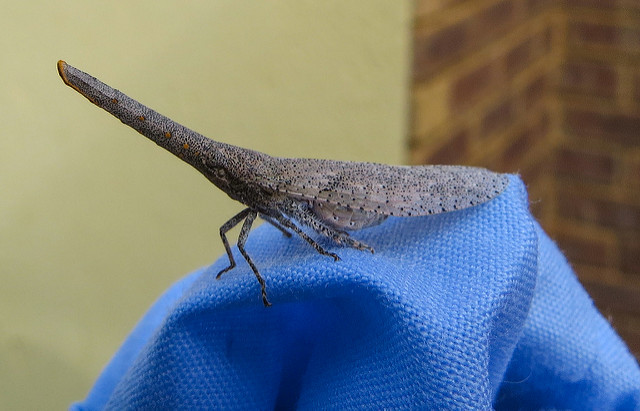 © steamtrainfan
© steamtrainfan


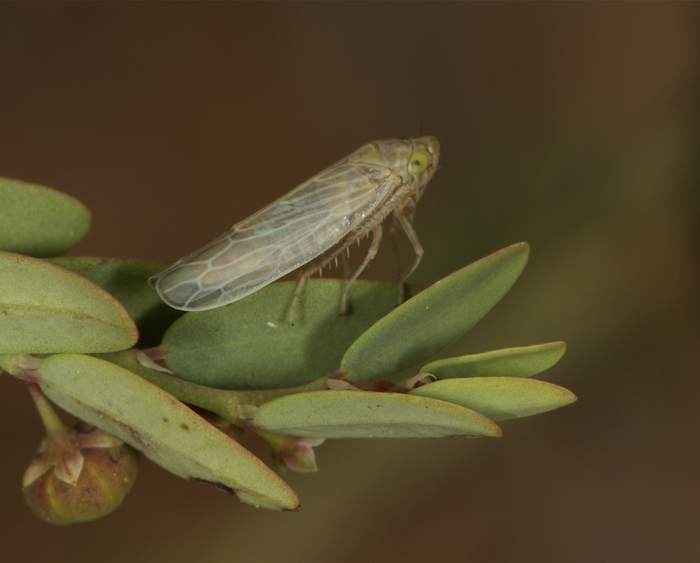 © ExFmem
© ExFmem